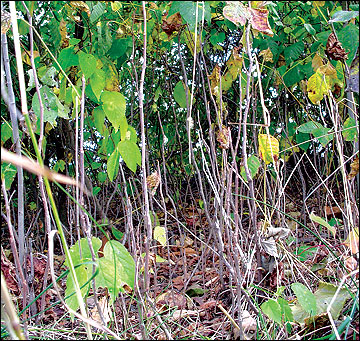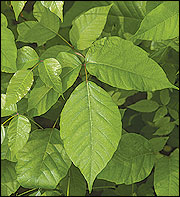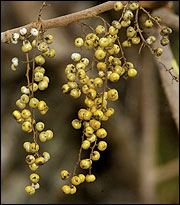Poison ivy
- Toxicodendron radicans
Woody
This "quail's eye view" of a poison ivy patch exemplifies good summer thermal and escape cover. Note that there is no mat of sod in the understory to inhibit movement or foraging.
Scott Sudkamp, Missouri Department of Conservation
Description
Poison ivy is a vine that can grow up to 60 feet high, trailing or climbing by aerial roots. It can also grow as a low, upright shrub. This species is often identified by alternate leaves with three oval to lance-shaped leaflets with a pointed tip. The leaves turn brilliant shades of red, orange and yellow in the fall. The flowers are greenish white and grow in clusters 1 to 4 inches long on new growth of stems. Creamy white fruits are globe-shaped, about 1/4 inch across and grow in grapelike clusters. The entire plant contains a poisonous oil that produces an intense skin irritation for humans who come in contact with it.
Use by bobwhites
Despite the hazard it presents to unwary hikers and gardeners, poison ivy is desirable as a favorite food of bobwhites. In areas where the plant is abundant, it is not uncommon to find quail crops full of poison ivy berries. Quail commonly locate nests in association with woody vines such as poison ivy. Dense stands can provide escape cover.






